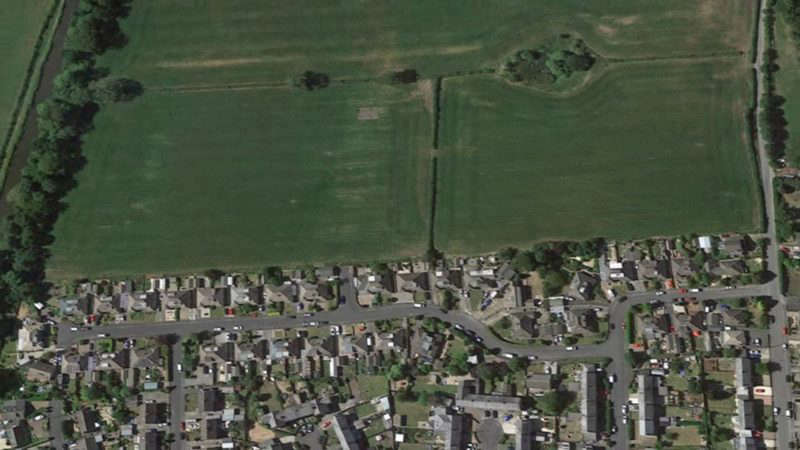
Heysham 1 power station is expected to continue operating until at least 2026 after a two-year extension plan was announced.
The station, which marks its 40th birthday this year, was due to enter defueling by March 2024 but that is now forecasted to happen in March 2026.
The decision on the change of end of energy-generation date was taken following a series of executive, board and shareholders meetings by power station owners EDF on Thursday March 9.
The precise date will now be determined by the results of regular graphite inspections and how those results are interpreted by EDF and by the independent regulator, the Office for Nuclear Regulation.
Heysham power stations has long been the Lancaster and Morecambe district's biggest employer, with Heysham 1 alone directly employing around 530 people with 200 contractors permanently based at the site.
With two operating power stations, Heysham is the country’s largest generating nuclear site and is on the UK Government’s list for future nuclear development.
The estimated end of generation date for Heysham 2 power station remains unchanged at March 2028.
A spokesperson for Heysham Power Stations said that keeping the station generating will "help preserve vital nuclear skills while plans for the future of the site develop".
“Heysham 1 has been powering the North West for 40 years and now we can help keep the lights on for even longer," said Martin Cheetham, Heysham 1’s station director (pictured below).
LISTEN to our interview with Martin Cheetham

“Today’s decision is testament to the hard work of the hundreds of skilled people who keep the site running daily and will help to preserve those vital nuclear skills.
“We also have an eye on the future and believe Heysham is the perfect site for new nuclear. It is already on the UK Government’s list for potential development so we look forward to seeing what part it can play as the country’s future nuclear strategy is developed.”
Heysham power stations said the decision will also support the UK’s energy security with more zero-carbon, weatherproof and affordable electricity for longer.
They said the additional 14TWh of electricity this station could generate over that two-year period could help to displace 2.9bn cubic metres of gas, and the carbon avoided from this displacement is 4.8m tonnes, like taking 2.3m cars off the UK’s roads for a year.

Heysham 1 began operating in 1983. Two previous reviews have already seen the station have its generating life extended by 10 years.
When EDF took responsibility for its fleet of nuclear power stations, which also includes stations in Hartlepool, Torness in Scotland and at Sizewell in Suffolk, Heysham 1 was due to stop generating in 2014.
In 2010, this was extended by five years to 2019. In 2016, this was extended again by a further five years to 2024.
Since the acquisition in 2009, EDF has invested more than £7bn to support extended operating lifetimes across its fleet.
Over the next five years (2023-27), the company said it aims to invest more than £1.5bn "to sustain safe and reliable generation, alongside delivering defueling and ensuring all AGR stations are preparing for this next phase".
The forecasted decision to extend Heysham 1's lifetime has been made after a rigorous review by EDF of the technical and commercial cases for life extension.
They said that in particular, "positive inspections of the graphite reactor cores during 2022 have increased confidence that the station can generate for longer and continue to meet stringent regulatory standards".
They also aim to continue generation for a further one year past the March 2026 date.
But there is still a risk that the new date set today may not be achieved.
End of generation dates are kept under regular review and revised based on the best information available at the time.
Decisions on end of generation dates for EDF’s nuclear power stations in the UK are independent of the regulator or government and are taken by EDF’s licensee board following recommendations from EDF Energy Nuclear Generation Limited’s Executive.
They are then endorsed by relevant senior boards and, if needed, shareholders.
Hartlepool in Teesside, which was also due to enter defueling in March 2024, has also has its generating life extended to March 2026.
EDF operates all of Britain’s eight nuclear power plants providing around 13 per cent of the country’s electricity.
All but one of Britain's nuclear plants are scheduled to stop operating by 2030 and EDF’s Hinkley Point C, the first new plant in more than 20 years, is not expected to come online until 2027.
Britain has been exposed, along with the rest of Europe, to high gas and power prices over the past year after Russia's invasion of Ukraine.
The country is also seeking to ramp up low-carbon nuclear power generation to help shore up its electricity supplies, while also meeting a climate target of net zero emissions by 2050, and has a goal of meeting around 25 per cent of electricity demand with nuclear power by the same date.



 DIARY: Beyond Radio presenter fighting cancer continues his '60 Before 60' challenge
DIARY: Beyond Radio presenter fighting cancer continues his '60 Before 60' challenge
 BIG FIGHT COUNTDOWN: Tyson Fury's father John headbutts Usyk supporter ahead of undisputed heavyweight title fight
BIG FIGHT COUNTDOWN: Tyson Fury's father John headbutts Usyk supporter ahead of undisputed heavyweight title fight
 Decision to refuse Galgate housing scheme planning permission upheld following public inquiry
Decision to refuse Galgate housing scheme planning permission upheld following public inquiry
 INTERVIEWS and PHOTOS: The story of Highest Point festival 2024
INTERVIEWS and PHOTOS: The story of Highest Point festival 2024
 INTERVIEW: Lancaster prison officer backed by Tyson Fury wins sport contest ahead of Miss England bid
INTERVIEW: Lancaster prison officer backed by Tyson Fury wins sport contest ahead of Miss England bid
 VIDEO and INTERVIEW: Lancaster schoolboy, 10, makes drum 'n' bass DJ debut at Lancaster festival
VIDEO and INTERVIEW: Lancaster schoolboy, 10, makes drum 'n' bass DJ debut at Lancaster festival
 Highest Point 'Lancaster Rocks' night cancelled due to thunderstorms warning
Highest Point 'Lancaster Rocks' night cancelled due to thunderstorms warning
 Quad bike rider dies after road crash in Morecambe
Quad bike rider dies after road crash in Morecambe
 Morecambe guesthouse couple to star on reality TV show 'Four in a Bed'
Morecambe guesthouse couple to star on reality TV show 'Four in a Bed'
 PHOTOS: Northern Lights dazzle on Highest Point festival day one
PHOTOS: Northern Lights dazzle on Highest Point festival day one
 Mother and son unveiled as new Lancaster mayoral team
Mother and son unveiled as new Lancaster mayoral team
 New police and crime commissioner for Lancashire begins role
New police and crime commissioner for Lancashire begins role
 Morecambe homeless man jailed after admitting criminal damage
Morecambe homeless man jailed after admitting criminal damage
 Firefighters tackle fire at flat in Morecambe
Firefighters tackle fire at flat in Morecambe
 Lancaster youth charity awarded £221,400 towards vision for 'creative youth space' in city
Lancaster youth charity awarded £221,400 towards vision for 'creative youth space' in city
 Tennis club near Lancaster unveils new courts after £50,000 fundraising campaign
Tennis club near Lancaster unveils new courts after £50,000 fundraising campaign
 INTERVIEW: Highest Point chief 'proud' of lineup for 2024 festival
INTERVIEW: Highest Point chief 'proud' of lineup for 2024 festival
 Highest Point festival stage times: all you need to know
Highest Point festival stage times: all you need to know
 Highest Point team 'excited' for sunny weekend as prep continues ahead of Lancaster festival
Highest Point team 'excited' for sunny weekend as prep continues ahead of Lancaster festival
 New Friends group officially formed to support popular Morecambe music venue
New Friends group officially formed to support popular Morecambe music venue




